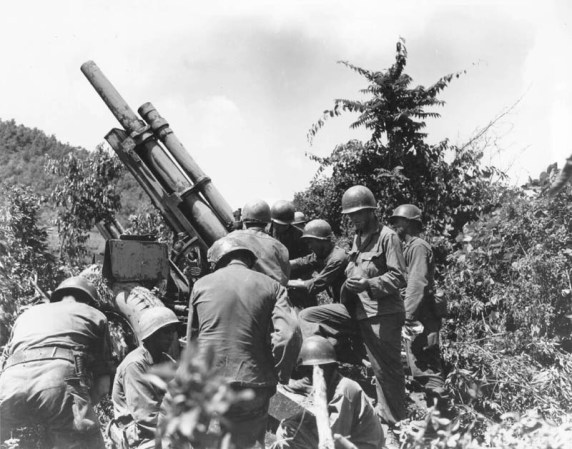The helicopter is seemingly tied forever with the Vietnam War, so it’s easy to forget that it actually got its start in World War II, hit its stride in Korea, and that Vietnam was just an expansion on those earlier successes. But while helicopters are often forgotten in the context of Korea (except for you MASH fans), there were six different models flying around the frozen peninsula.

(San Diego Air and Space Museum)
H-13 Sioux
The H-13 Sioux was the first helicopter deployed to Korea with the 2nd Helicopter Detachment in November 1950 where it served in utility, reconnaissance, and transportation missions. But just a few months later in January 1951, it made history as the primary air ambulance for American forces in the war, transporting 18,000 of America’s 23,000 casualties in the war.

(U.S. Army)
OH-23 Raven
The H-23 Raven helicopter also conducted medical evacuation missions after it arrived in Korea in early 1951. These would become more famous for their observation role, serving as artillery scouts in Korea. But they pressed on after the war’s end and helped map out landing zones for UH-1s in Vietnam, though they were quickly replaced by more Hueys and Cobras in that war.
Sikorsky HO3S-1 Rescue, 1951
H-5/HO3S-1
The U.S. Marine Corps and Air Force were heavily invested in Sikorsky’s S-51 helicopter, dubbed the H-5 by the Air Force and the HO3S-1 by the Marine Corps and Navy, when the war broke out. The Air Force and Marines quickly sent their helicopters into combat where they provided aerial platforms for commanders and conducted frequent rescues. They also served as observers for naval artillery and scooped up pilots who had fallen in the sea.

(U.S. Marine Corps Sgt. Robert E. Kiser)
H-19 Chickasaw/HRS-2
The H-19 Chickasaw was used by Marine Corps and Army units to airlift supplies and troops into combat as well as to shift casualties out. These were large, dual-rotor helicopters similar to today’s Chinook. While not as strong as its modern counterpart, the Chickasaw could carry up to six litter patients and a nurse when equipped as an air ambulance, or eight fully equipped soldiers when acting as a transport.
Model 47
The Model 47 was the civilian predecessor to the H-13 and was essentially identical. The Navy used the Model 47 primarily in training new helicopter pilots but also in utility and medical evacuation roles, very similar to the more common H-13 Sioux in the war.

(James Emery, CC BY 2.0)
HUP-1/H-25 Mule
The HUP-1 began its life as a Navy bird when it was designed in 1945 to satisfy a requirement for carrier search and rescue. The initial HUP-1 design gave way to the HUP-2 which also served in anti-submarine, passenger transport, and cargo roles. The Air Force helped the Army buy the helicopter in 1951 as a cargo carrier and air ambulance designated the H-25 Mule, and it served extensively in Korea in these roles.


























